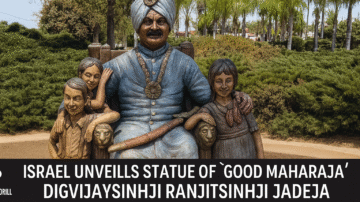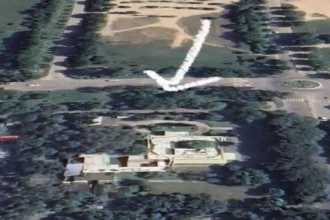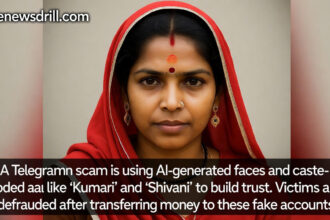Literacy in India
India’s literacy landscape has seen significant transformations over the years, driven by concerted efforts from both the central and state governments. This article delves into the current literacy rates across Indian states and union territories, examines the initiatives undertaken to promote education, and underscores the benefits of a literate populace.
Top 10 States/UTs by Literacy (2023–24, PLFS) Literacy Rate
Meghalaya – 94.2%
Tripura – 93.7%
Chandigarh (UT) – 93.7%
Goa – 93.6%
Puducherry (UT) – 92.7%
Manipur – 92.0%
Bottom 10 States/UTs by Literacy (2023–24, PLFS) Literacy Rate
These figures illustrate stark regional gaps. The Northeast dominates the high end, reflecting historically strong educational outcomes there. In contrast, populous states like Bihar, Uttar Pradesh and Madhya Pradesh, with many rural and disadvantaged communities, trail far behind. Gender and urban/rural gaps persist as well: literacy among women remains substantially lower than among men in most states, and urban areas (with far better school access) outperform rural areas. (For example, previous data show urban literacy well above 85% versus roughly 70–75% in rural India.) Bridging these disparities is a core goal of India’s education policy – from the Right to Education Act to the National Education Policy (NEP) 2020, which envisions universal literacy by 2030.
Under the ULLAS (Ullas: Nav Bharat Saaksharta Karyakram) literacy campaign, Tripura has officially been declared a fully literate state as of June 2025, joining the ranks of Mizoram and Goa. This milestone reflects the state’s dedicated efforts toward eliminating illiteracy through grassroots awareness, digital learning modules, and community-led education drives. The campaign focused on empowering adults who had missed out on formal schooling, especially in rural and tribal areas, by teaching foundational reading, writing, and numeracy skills.
Tripura’s achievement is particularly significant given its socio-economic challenges and diverse population. The literacy push saw active collaboration between local governments, volunteers, and non-profits to reach remote regions and ensure inclusive learning. The success of this initiative not only uplifts the state’s human development index but also strengthens its socio-economic prospects. With Tripura now achieving full literacy, it serves as a model for other northeastern and underrepresented regions aiming to bridge educational gaps under the ULLAS framework.Lieutenant Governor B.D. Mishra of Ladakh (center) with new literates and volunteers at a ULLAS literacy celebration in Leh (June 2024). Ladakh achieved over 97% literacy and was declared fully literate under the ULLAS-Nav Bharat Saaksharta Karyakram.
ULLAS (Nav Bharat Saaksharta Karyakram)
- A flagship adult literacy drive in India is ULLAS (Nav Bharat Saaksharta Karyakram), launched 2022–23. ULLAS targets all adults (15+) who have missed schooling, providing a “whole-of-government” volunteer‑driven campaign for basic reading/writing, numeracy, life and vocational skills. Under ULLAS, a new definition of literacy emphasizes functional ability (not just signing one’s name) and includes digital/financial skills. The scheme is fully aligned with NEP 2020 and promotes “Jan Jan Saakshar” (every person literate) through volunteer mentors and community groups. Key features include: five components (Foundational Literacy & Numeracy, Critical Life Skills, Basic Education, Vocational Skills, Continuing Education) and use of a digital platform (a ULLAS app) for registration and learning.
- ULLAS has rapidly scaled up. As of mid-2025, over 1.77 crore learners have taken the foundational literacy assessment under ULLAS nationwide, and 2.40 crore learners (with 41 lakh volunteer teachers) have registered on the ULLAS mobile app. These figures highlight broad outreach: volunteers from civil society, schools and government agencies have identified illiterate adults and guided them through learning modules. The impact is already visible in states like Ladakh and Goa. In June 2024, Lt. Governor B.D. Mishra declared that Ladakh had attained full functional literacy after surpassing 97% literacy. Similarly, in May 2025 Goa was officially pronounced fully literate – the second state (after Mizoram) to cross the 95% threshold. These milestones underscore ULLAS’s promise: leveraging volunteerism and inter-departmental coordination to lift adult literacy toward the national target of universal literacy by 2030.
Other Literacy and Education Initiatives
India’s literacy improvements also reflect decades of school-education schemes that improve basic education and equality. Notable Programmes include:
Samagra Shiksha Abhiyan (SSA):
An overarching school-education scheme (pre-primary to class 12), formed by subsuming SSA, RMSA and Teacher Education programs. With continued funding through 2025-26 (~₹2.94 lakh crore), Samagra Shiksha is fully aligned with NEP 2020. Its objectives span universal enrollment, quality learning outcomes and equity. It particularly emphasizes foundational literacy and numeracy (classes I–II), inclusive education (gender/Social-group gaps), and implementing RTE mandates. Samagra Shiksha has fostered innovations (like activity-based learning, curriculum reforms and ICT integration) to improve basic literacy in schools.
Beti Bachao, Beti Padhao (BBBP):
Launched in 2015 to promote the girl child, this multi-sectoral scheme focuses on “preventing gender-biased sex selection, ensuring survival and protection of the girl child and promoting her education”*. As a result of BBBP, India’s child sex ratio at birth has improved (from 918 girls per 1000 boys in 2014–15 to 930 in 2023–24), and the gross enrollment ratio for girls at the secondary level has risen (from 75.5% in 2014-15 to 79.4% by 2021-22). By incentivizing families and strengthening girl-child services, BBBP indirectly boosts literacy and schooling for girls.
Digital Literacy and Education:
The Digital India initiative and related programs (like the Pradhan Mantri Gramin Digital Saksharta Abhiyan) work to equip citizens with basic digital skills. These efforts complement traditional literacy by expanding access to online learning and ICT tools. For example, digital learning platforms and virtual classrooms under DIKSHA, e-books and ICT labs in schools, and mobile literacy apps extend literacy outreach. (Government reports note millions of youth trained in basic computing and e-payment skills, helping bridge the digital divide.)
State-led Programs:
Many states supplement central schemes with their own literacy drives. Goa’s administration, for instance, took a “whole-of-government” approach in its ULLAS campaign (mobilizing Panchayats, schools, NGOs). Similarly, Ladakh’s education department held ULLAS melas (fairs) and award ceremonies to encourage learners. Other states, such as Odisha and West Bengal, run periodic adult education and “awareness literacy” campaigns in low-literacy pockets. Kerala, Tamil Nadu and Maharashtra have long traditions of continuing education centers and volunteer teaching networks. These state initiatives target local needs (e.g. tribal communities or migrant groups) and help drive up literacy in lagging districts.
Key education schemes summary:
As the table below indicates, flagship schemes converge on universal quality education and literacy goals. Samagra Shiksha, for example, prioritizes early reading and numeracy as per NEP goals. Beti Bachao Beti Padhao ensures girls enroll and stay in school. Initiatives like ULLAS (and its predecessors NILP), in turn, address adult non-literacy. Together, these programs aim to build a literate society across genders and regions.
Socioeconomic Benefits of Literacy
Extensive research underscores the transformative impact of literacy on individuals and society. UNESCO notes that literacy “improves lives by expanding capabilities”, which in turn reduces poverty and boosts labor-force participation. Educated citizens have better employment prospects, higher earnings and are more likely to access health and social services. In particular, women’s literacy has a ripple effect: literate women tend to marry later, have healthier families, and ensure education for their children, magnifying social development gains. A literate population also fosters economic growth: it supports a skilled workforce for industry and innovation. At the national level, raising literacy rates is linked to achieving several UN Sustainable Development Goals (SDG 4 on quality education, SDG 5 on gender equality, SDG 1 on poverty reduction, etc.).
For India, universal education is not just a right but a strategic imperative. The National Education Policy 2020 explicitly targets 100% literacy by 2030, recognizing that India’s future competitiveness and inclusiveness depend on an educated citizenry. Higher literacy enables meaningful participation in democracy and technology, and underpins schemes like Digital India and Skill India. Thus, continuing to invest in school education, adult learning (via ULLAS/NILP), and related campaigns is vital. As India’s official reports emphasize, “education has the power to change the world”. Ongoing efforts to bring every child and adult into the literacy fold – whether in Goa or in tribal districts – reflect the country’s commitment to this vision.
Benefits of a Literate and Educated Population
Conclusion:
While India has made commendable progress in improving literacy rates, challenges persist, especially in states with lower literacy levels. Continued investment in educational infrastructure, targeted schemes for marginalized groups, and community engagement are crucial to achieving universal literacy. The collective efforts of the government, civil society, and individuals will pave the way for a more educated and empowered India.
Sources: Official government statistics and releases were used. Literacy rates are drawn from the Periodic Labour Force Survey (PLFS) 2023–24 (MOSPI) as reported by official releases and the Press Information Bureau. Scheme details come from Ministry of Education press notes and government reports. General context on literacy’s benefits is from UNESCO analyses.











